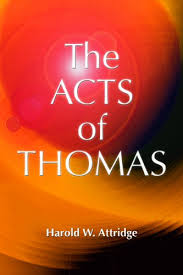தோமோ நடபடிகள் என்னும் 3ம் நூற்றாண்டு நூல்
ரோமன் போப்பரசரின் பதிப்பாளர் பர்ன் ஓட்ச் பர்பொர்னெ London: Burns Oates & Washbourne Ltd. Publishers to the Holy See.
இவர்கள் முக்கிய பதிப்பு- தூய பட்லரின் புனிதமானவர்கள் வரலாறு எனப்படும்- பட்லர்ஸ் லைவ் ஆப் செயின்ட்ஸ் (Butlers lives of Saints)என்னும் 12 தொகுப்பு, மாதமொன்றிற்கு- அம்மாதத்தின் புனிதர்களை நினைவு படுத்தும்படியாக 12 தொகுப்பு கொண்டது.










